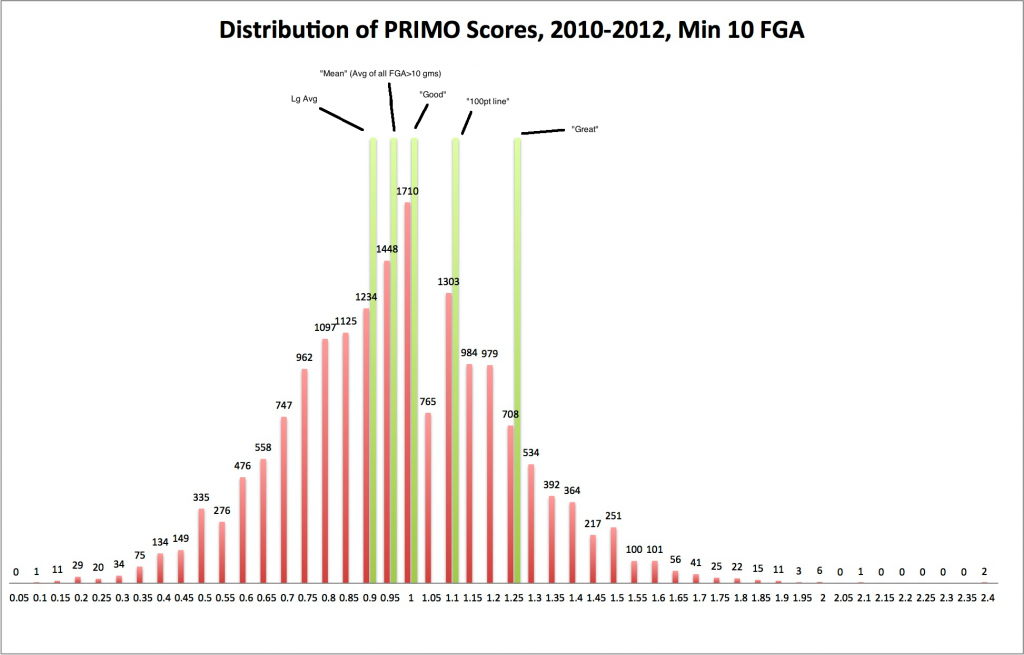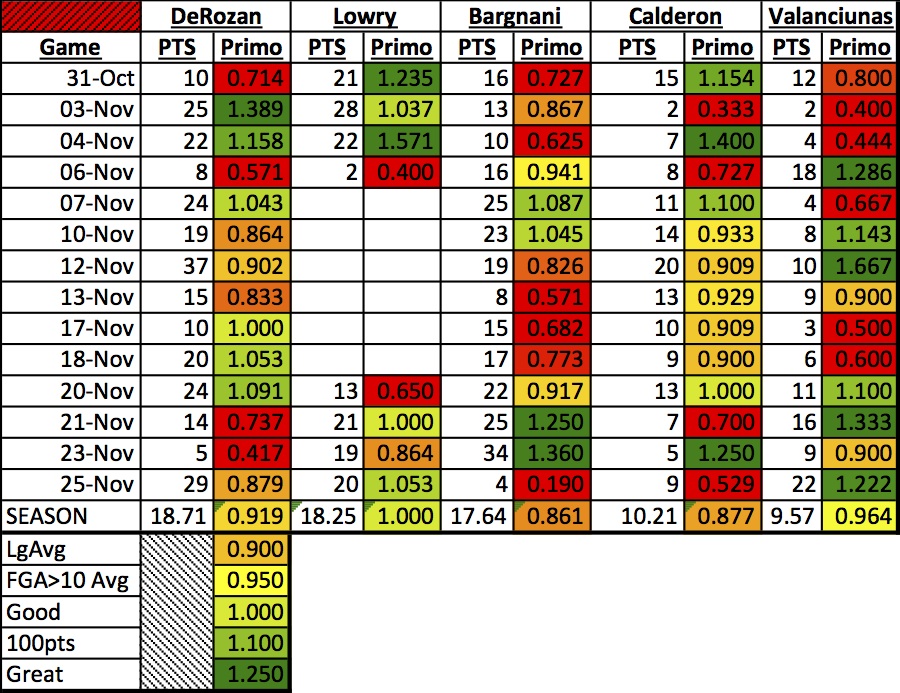Since the start of the 2010-11 season, there have been 17,301 instances of an NBA player taking 10 field goal attempts or more. According to a “new” “stat” “I” just “invented,” as I’ll outline below, Andrea Bargnani’s 2-for-19 performance from last Sunday’s game against the San Antonio Spurs was the 33rd least efficient scoring performance of all of them.
The purpose of this article is not to be overly statistical – I’ll use math terms, but only to explain the logic – the point of this article is actually to simplify. The point is also not to rag on Bargnani. There has been some misunderstanding and disagreement among the Republic of late over what exactly makes a good game for a scorer.
For example, while some see “22 points” in the box score and deem it a strong performance, others see “10/21 FG, 0/2 FT, 2 TO” and deem it a pretty poor performance. What I wanted to do was take interpretation of the box score out of the equation and provide a simple “scoring efficiency” rating we can look at on a game-by-game basis.
Of course, box score stats are flawed, and even something like field goal attempts doesn’t tell you much without watching the game. But, for the purposes of improving our discussion, I introduce to you my “new” “stat” which isn’t really either of those things…
PRIMO – Points Rated In My Own (Way)
Simply put, PRIMO is just points divided by “chances,” defined as FGA + Turnovers + (Free Throws / 2). Chances, here, is an approximation of possessions that we can calculate easily to avoid going math-heavy.
What PRIMO will tell you is simply how many points a player scored based on how many possessions they used. (Again, this ignores other important aspects of the game like assists, rebounding, defense, and more – this is JUST a scoring efficiency measure.)
So What is a Good PRIMO Score?
To keep it easy in your head, you can consider a PRIMO score of 1.00 to be an “okay” score – a player scored one point for every possession they used. Since teams have averaged about 92 possessions per game over the past few years in the NBA, if a player with a PRIMO score of 1.00 used every possession for a team, the team would score 92 points (under the poor assumption of no offensive rebounds – forgive me for the assumption, but this IS a Bargnani-based analysis). Not great, but not terrible. If you wanted your team to score 100 points (free pizza!), you would want players to hit a PRIMO score of 1.09, for an average-paced team (the Raptors play at a slightly slower pace, 91 possessions per game).
For reference, the league average PRIMO score so far this year is 0.9 at the team level. Over the past three seasons, for any player who took 10 field goal attempts or more, the distribution of PRIMO scores is as follows (I should note that PRIMO will look silly for players with less than five field goal attempts, and the point of it is to compare higher-volume shooters).
PRIMO Distribution, 2010-11 to Present
For all player games with greater than 10 FGA.

Basically we can see that these scores are close to normally distributed – that is, the bulk of the games are around average, with fewer and fewer games further away from the average. I’ve drawn a few lines in there for reference.
PRIMO – Raptor Example

As you can see, the stat does a decent job backing up what our eyes have told us so far: Bargnani has been inefficient in scoring his heavy points total, DeRozan has been a bit more efficient, Lowry’s value is negated some by his turnovers and trigger-happy nature, etc. At the same time, as I mentioned at the outset, this stat tells you nothing of Jose’s passing, Jonas’ rebounding, etc. This is only a stat to measure scoring efficiency.
So What’s the Point?
There isn’t one, really. When trying to figure out just how bad Bargnani’s recent game was, I wanted to roll out a VERY simple and basic stat we can use when quickly scanning the box scores.
But next time you’re looking at a box score (which, of course, is absolutely no replacement for watching the game and analyzing what you SEE), keep efficiency in mind. And specifically when analyzing the Bargnani box scores, think PRIMO.





